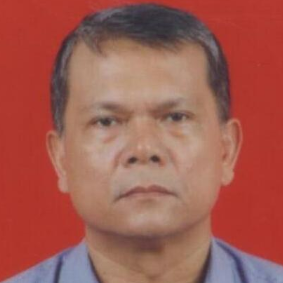International Journal of Intelligent Systems and Applications (IJISA)
IJISA Vol. 4, No. 12, 8 Nov. 2012
Cover page and Table of Contents: PDF (size: 350KB)
Solving Economic Load Dispatch Problem Using Particle Swarm Optimization Technique
Full Text (PDF, 350KB), PP.12-18
Views: 0 Downloads: 0
Author(s)
Index Terms
Economic Load Dispatch, Particle Swarm Optimization, Quadratic Programming
Abstract
Economic load dispatch (ELD) problem is a common task in the operational planning of a power system, which requires to be optimized. This paper presents an effective and reliable particle swarm optimization (PSO) technique for the economic load dispatch problem. The results have been demonstrated for ELD of standard 3-generator and 6-generator systems with and without consideration of transmission losses. The final results obtained using PSO are compared with conventional quadratic programming and found to be encouraging.
Cite This Paper
Hardiansyah, Junaidi, Yohannes MS, "Solving Economic Load Dispatch Problem Using Particle Swarm Optimization Technique", International Journal of Intelligent Systems and Applications(IJISA), vol.4, no.12, pp.12-18, 2012. DOI:10.5815/ijisa.2012.12.02
Reference
[1]A.J Wood and B.F. Wollenberg, Power Generation, Operation, and Control, John Wiley and Sons, New York, 1984.
[2]Hadi Saadat, Power System Analysis, Tata McGraw Hill Publishing Company, New Delhi, 2002.
[3]Z.X. Liang and J. D. Glover. A Zoom Feature for a Dynamic Programming Solution to Economic Dispatch Including Transmission Losses, IEEE Transactions on Power Systems, 1992, 7(2): 544-550.
[4]A. Bakirtzis, et al. Genetic Algorithm Solution to the Economic Dispatch Problem, IEE Proc. Generation, Transmission, and Distribution, 1994, 141(4): 377-382.
[5]H. T. Yang, P. C. Yang, and C. L. Huang. Evolutionary Programming Based Economic Dispatch for Units with Non-Smooth Fuel Cost Functions, IEEE Trans. on Power Systems, 1996, 11(1): 112-118.
[6]N. Sinha, R. Chakrabarti, and P.K. Chattopadhyay. Evolutionary Programming Techniques for Economic Load Dispatch, IEEE Trans. on Evolutionary Computations, 2003, 7(1): 83-94.
[7]W. M. Lin, F. S. Cheng, and M. T. Tsay. An Improved Tabu Search for Economic Dispatch with Multiple Minima, IEEE Trans. on Power Systems, 2002, 17(1): 108-112.
[8]K. Y. Lee, A. Sode-Yome, and J. H. Park, Adaptive Hopfield Neural Network for Economic Load Dispatch. IEEE Trans. on Power Systems, 1998, 13(2): 519-526.
[9]J. B. Park, K. S. Lee, J. R. Shin, and K. Y. Lee. A Particle Swarm Optimization for Economic Dispatch with Nonsmooth Cost Functions, IEEE Trans. on Power Systems, 2005, 20(1): 34-42.
[10]S.Y. Lim, M. Montakhab, and H. Nouri. Economic Dispatch of Power System Using Particle Swarm Optimization with Constriction Factor, International Journal of Innovations in Energy Systems and Power, 2009, 4(2): 29-34.
[11]Z. L. Gaing, Particle Swarm Optimization to Solving the Economic Dispatch Considering the Generator Constraints, IEEE Transactions on Power Systems, 2003, 18(3): 1187-1195.
[12]J. Kennedy, and R. C. Eberhart. Particle Swarm Optimization, Proceedings of IEEE International Conference on Neural Networks (ICNN’95), 1995, 4: 1942-1948, Perth, Australia.
[13]Y. Shi and R. C. Eberhart, Particle Swarm Optimization: Development, Applications, and Resources, Proceedings of the 2001 Congress on Evolutionary Computation, 2001, 1: 81-86.
[14]RMS Danaraj and F Gajendran. Quadratic Programming Solution to Emission and Economic Dispatch Problems, Journal of The Institution of Engineers (India), pt EL, 2005, 86: 129-132.
[15]M. Vanitha, and K. Tanushkodi. Solution to Economic Dispatch Problem By Differential Evolution Algorithm Considering Linear Equality and Inequality Constrains. International Journal of Research and Reviews in Electrical and Computer Engineering, 2011, 1(1): 21-26.
[16]Anis Ahmad, Nitin Singh, and Tarun Varshney. A New Approach for Solving Economic Load Dispatch Problem, MIT International Journal of Electrical and Instrumentation Engineering, 2011, 1(2): 93-98.
[17]M. Sudhakaran, P. Ajay D Vimal Raj, and T. G. Palanivelu. Application of Particle Swarm Optimization for Economic Load Dispatch Problems, The 14th International Conference on Intelligent System Applications to Power Systems, Kaohsiung, Taiwan, 2007: 668-674.


